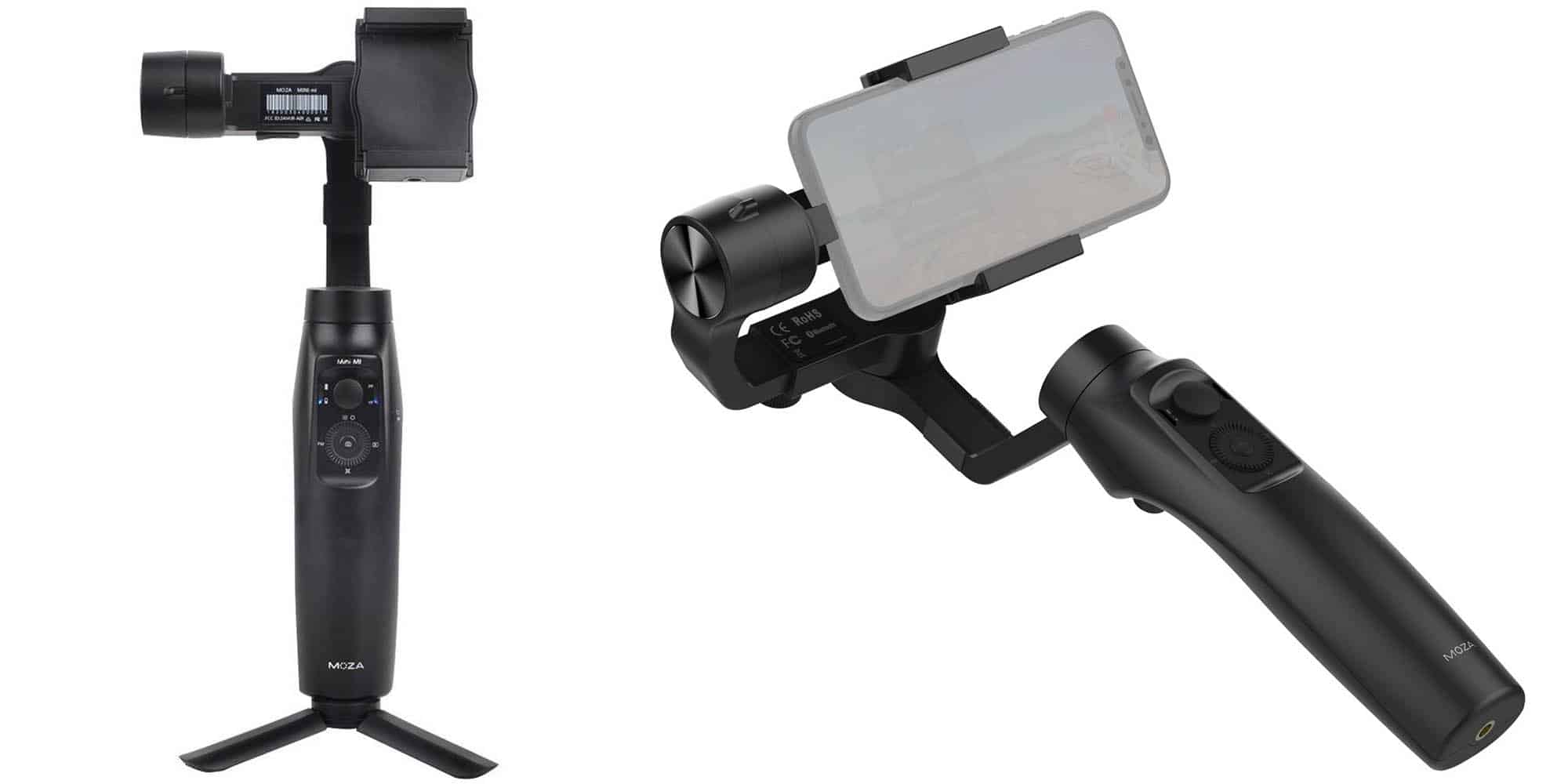Smartphone gimbals have been getting cheaper and cheaper thanks to a large number of Chinese manufacturers competing for their piece of the cake. The excellent DJI Osmo Mobile 2 and Zhiyun Smooth 4 are the most popular iPhone/Android 3-axis gimbals out there, but when one of my readers suggested I check out the Moza Mini-MI I was immediately taken aback by its features for a budget gimbal.
I have reviewed other budget (under $100) iPhone gimbals in the past, and the conclusions have always been the same. You’ll save money, but at the cost of build quality and image stabilization quality. In other words, they’re inferior in almost every respect other than cost.
But with the Moza Mini-MI, there are a few features that you simply don’t find on any other gimbal, including the more expensive ones. On paper this really could be the DJI Osmo Mobile 2 killer, so let’s see how it turned out after I got my hands on one.
First Impressions
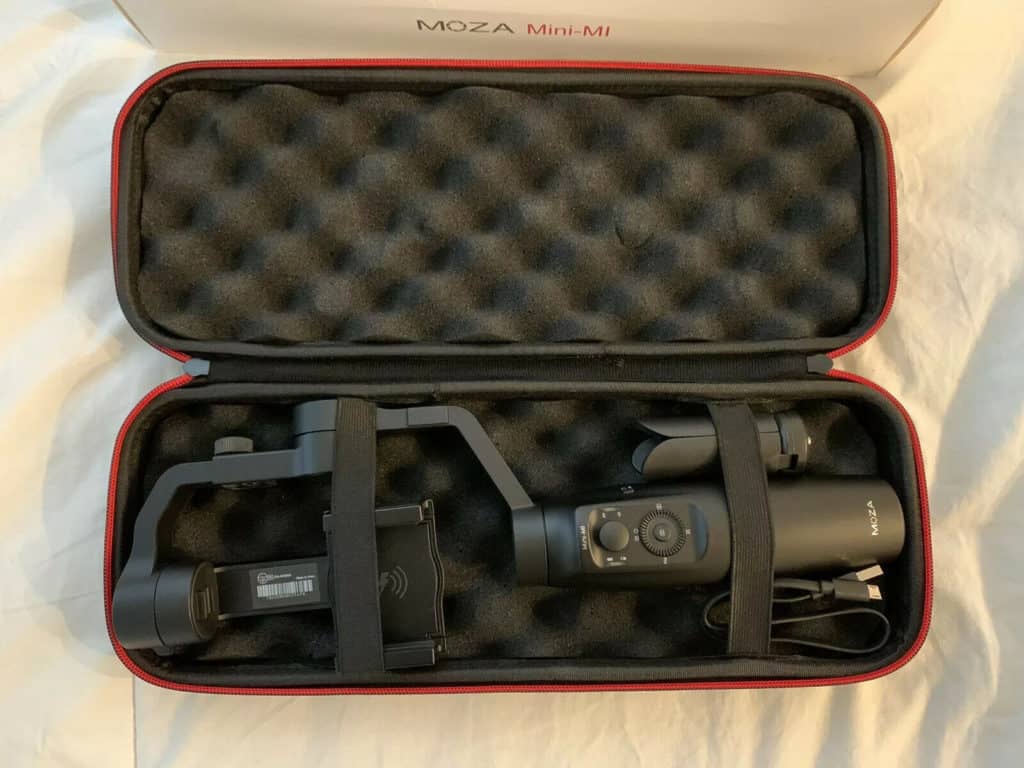
The Moza Mini-MI comes bundled with all the things you’d expect from a smartphone gimbal. A rather sleek semi-hard plastic case, Micro-USB charging cable and a mini tripod. As cheap as they may be, I always appreciate when gimbal manufacturers include a mini tripod since they are useful for hands-free recording off a flat surface or acting as a kind of monopod when its legs are closed.
The gimbal itself is noticeably larger and heavier than other gimbals I’ve used. It weighs 543g with the battery, making it roughly 50g heavier than your average gimbal. The handle is thick and comfortable to use, but those who are after a compact gimbal might find the Mini-MI a little big.
I also noticed the gimbal packs a total of 3 quarter-inch thread screws – more than any other gimbal I have tested. There is one at the gimbal head, one at the back of the handle and one more at its base. This means you’ll be able to connect accessories such as tripods or microphones in a variety of different configurations.
Build-quality wise, the Mini-MI doesn’t feel quite as solid as the Osmo Mobile 2 or Freevision Vilta-M. Then again, those are the best in the business when it comes to build quality, so it wouldn’t be completely fair to draw comparisons given the price difference.
Mounting your iPhone or Android device to the gimbal is done in much the same way as any other smartphone gimbal. Simply temporarily unlock the spring loaded clamp and slot in your phone.
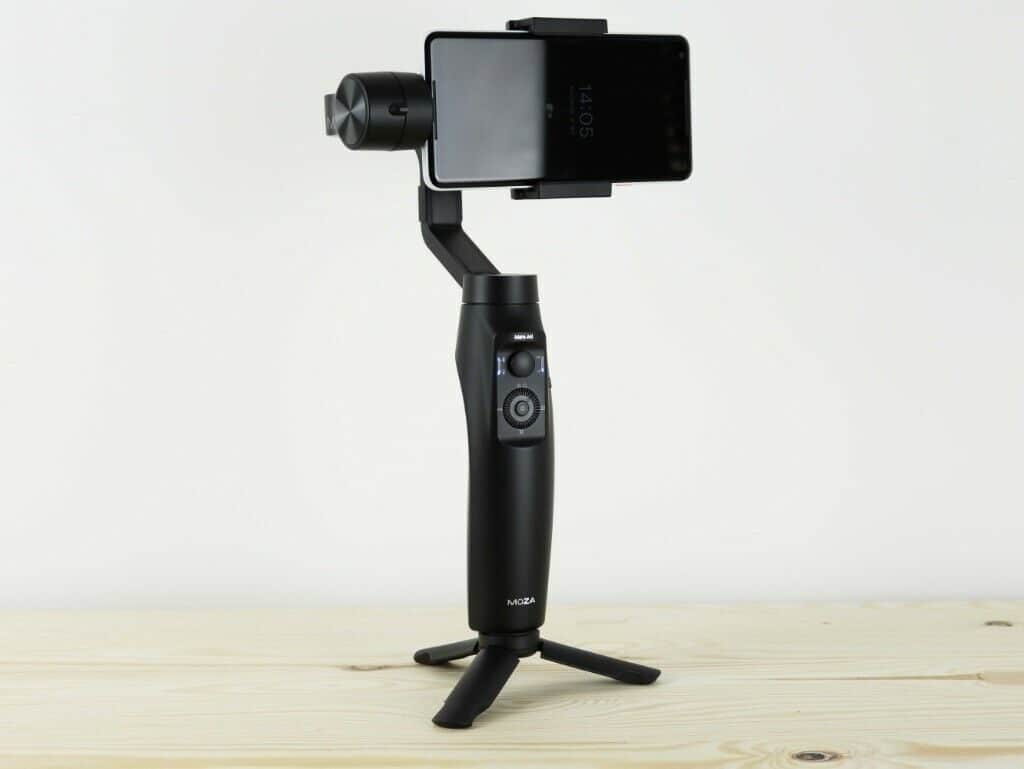
Compatibility
The Moza Mini-MI has powerful motors which give it an impressive max payload of 300g. This means even the heaviest smartphones won’t be too heavy, and the max supported width of 61-92mm means I can’t think of any phone that would be incompatible with the gimbal.
The Mini-MI’s killer feature, the wireless charging, uses the Qi wireless charging standard so will be compatible with almost any phone that supports wireless charging.
Features
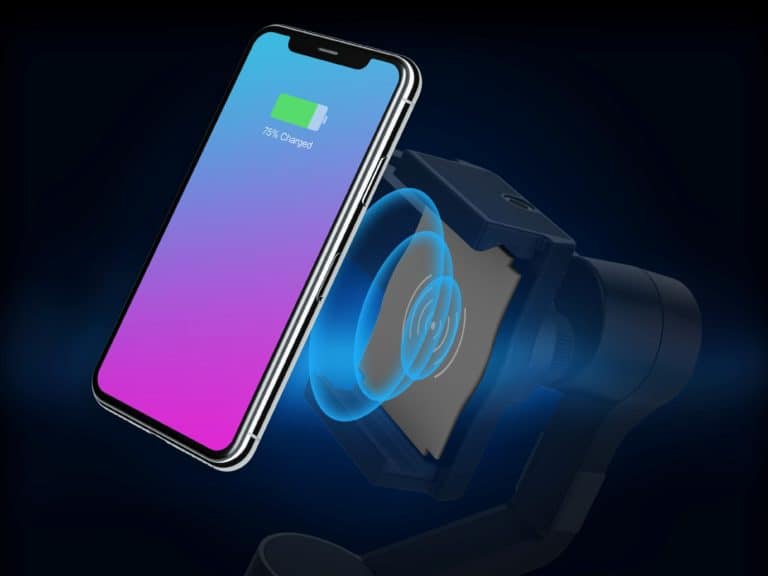
For a budget gimbal, you wouldn’t expect the number of features the Moza Mini-MI is packing. In fact, feature-wise, the gimbal has the likes of the DJI Osmo Mobile 2 beat.
Perhaps the biggest feature is wireless charging. While other gimbals conveniently double up as power banks, you need to use one of their USB ports along with a charging cable.
With the Mini-MI, simply mounting your wireless charging capable smartphone will charge the phone. If you’re the kind of person that often finds themselves short on power, you won’t find a more convenient way of charging your smartphone.
Another standout feature is the Mini-MI’s impressive range of motion. The Mini-MI can pan 360° without issue, where other gimbals often fall short. This is great for those wanting to do full pan shots.
Shooting Modes
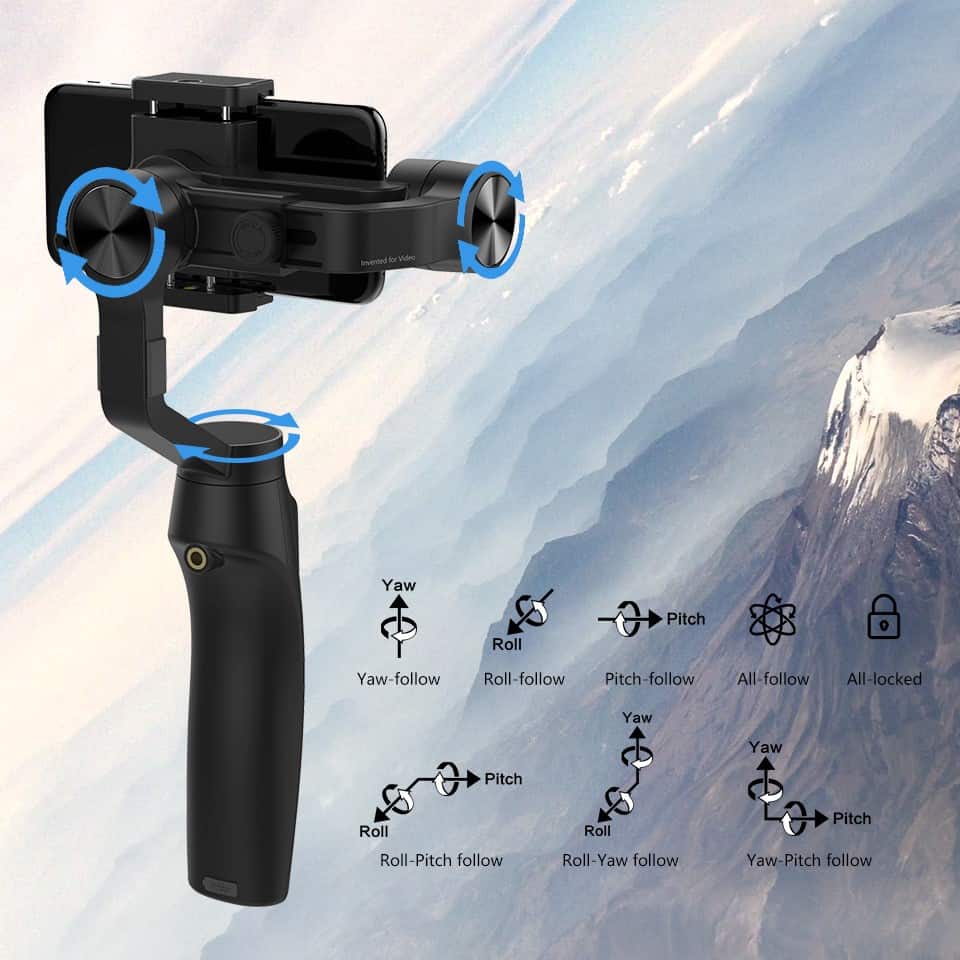
Another win for the Mini-MI is its shooting modes. We typically expect a smartphone gimbal to have locked (all axes locked), pan-following (tilt and roll axes locked) and following (only roll axis locked) modes.
However, the Mini-MI allows for much more granularity in the following mode by letting the user to independently lock each axis (pan, roll and tilt) allowing for a total of 8 combinations.
I will say that personally I did not find myself taking advantage of this ability to independently lock and unlock each axis. In fact, I reckon most users will not either as few situations call for it, but it’s still nice to have as an option.
In addition to these standard shooting modes, the Moza App also has some unique shooting modes. The first is the Sports mode which increases the motor speed, making it perfect for capturing fast footage. The second is selfie-mode, which flips the phone at the press of a button. Finally, there’s the ‘Inception Mode’, where the Mini-MI will perform a barrel roll allowing for some creative shots.
Performance
We’ve established that the Moza Mini-MI has a seriously extensive list of features, but ultimately a gimbal should be about effectively delivering that silky smooth, shake-free footage.
The Moza Mini-MI has good image stabilization performance, but not the best.
Performance wise, it is almost identical to other budget gimbals like the Hohem iSteady Mobile. It doesn’t do quite as well as the more expensive DJI Osmo Mobile 2 or Zhiyun Smooth 4. Here’s a video comparing its footage with the Osmo Mobile 2.
Battery Life
Despite being a rather bulky gimbal, the Moza Mini-MI only packs a 2100mAh battery that lasts 10 hours off a full charge. That’s certainly not bad, but behind many other gimbals which have a 15+ hour battery life.
Verdict
Overall, the Moza Mini-MI is a tremendous gimbal, especially for the price. It definitely earns itself a place in my list of best gimbals for the iPhone. There is even an argument that it is a better overall gimbal than the Osmo Mobile 2 thanks to its generous number of features.
The wireless charging and range of motion are its key strengths, although it also boasts a high max payload and great flexibility in shooting modes.
However, despite all its strengths, the image stabilization performance and build quality are definitely that of a budget gimbal. In all honesty, the difference is very small, but as someone who judges a gimbal’s worth first and foremost on stabilization performance, I don’t think it would be fair to call it the best smartphone gimbal out there.
Rating: 4/5
Pros:
- Wireless Charging
- Price
- Range of motion
- Plenty of shooting modes
Cons:
- Budget build quality and image stabilization performance
- Moza App isn’t very good
